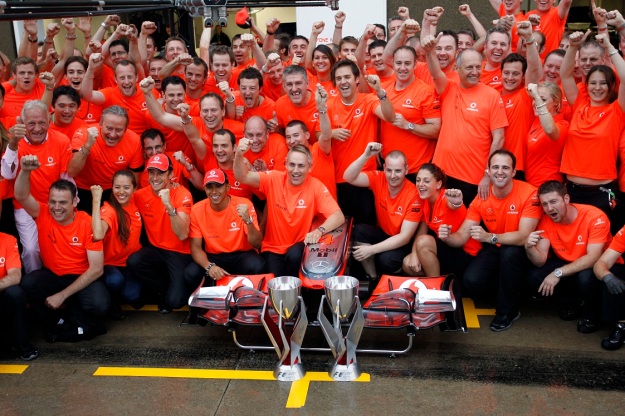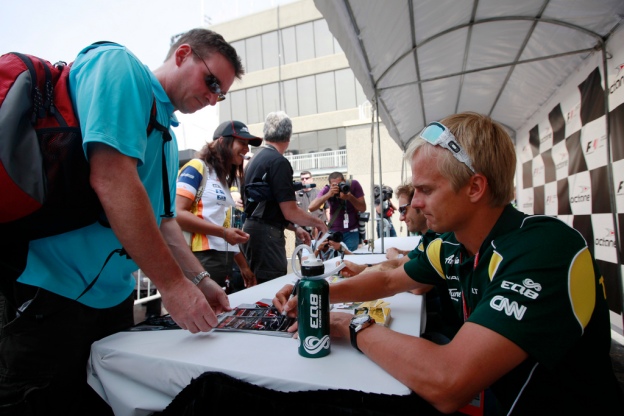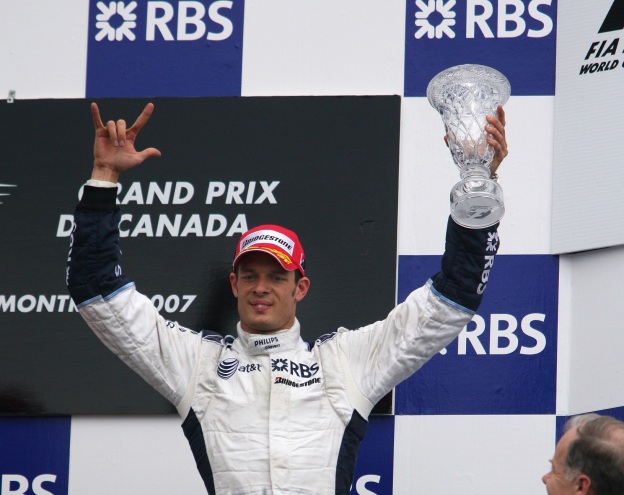In the midst of Formula One’s European season, Round Seven of the 2011 World Championship sees the sport take a trip across the Atlantic Ocean to the vibrant city of Montreal for the Canadian Grand Prix on Sunday 12 June.
• Mercedes-Benz power has achieved eight podiums in Canada since 1999, including four victories.
• Six of the last nine races have featured Safety Cars; the historical probability of 67% is one of the year´s highest.
• The 2010 race featured 61 pit stops; so far in 2011, there have been an average of 60 pit stops per race.
Michael Schumacher
“Montreal is a great city to visit and the Canadian Grand Prix is always one of those races where it feels like the whole city gets involved and creates a really nice atmosphere. The circuit itself is very much a stop-and-go scenario with much of the focus on top speed and braking. We also have the two DRS zones this year for the first time, so it will be interesting to see the impact that this makes. It is really difficult to have an idea of how our car will perform in Montreal. There is no doubt that Monaco was a tough weekend for the team but, as always, we will learn our lessons, and be ready to fight again in Canada.”
Nico Rosberg
“The Canadian Grand Prix is one of my favourite race weekends of the season. Montreal is a great city, with a carnival atmosphere over the weekend, and the fans are always really friendly and so enthusiastic. The Circuit Gilles Villeneuve is a nice race track; it’s also very challenging and hard on the engine and brakes. I’m looking forward to the weekend, and I hope that we can move up and be back competing where we belong. The spirit within the team is great and we will fight for a better result than in Monaco. I am confident that we will be able to do it.”
Ross Brawn, Team Principal
“The Canadian Grand Prix is always one of the most popular races on the calendar, and an important weekend to showcase our sport to the North American market. The Circuit Gilles Villeneuve is the first real high-speed circuit of the season, where the brakes are important and engine power is a factor. All of the teams suffered with big tyre problems because of graining last year, so it will be interesting to see how the new Pirelli tyres behave next weekend. It’s not easy to predict whether the tyre situation will follow what we experienced in 2010 or whether we will have a different situation. We have two DRS zones which will increase overtaking at a circuit where passing was already possible. With the combination of DRS and the tyres, this should lead to an exciting and eventful weekend.”
Norbert Haug, Vice-President, Mercedes-Benz Motorsport
“Much like in Monaco where we raced last weekend, Montreal’s Circuit Gilles Villeneuve mostly features slow speed corners, and we will again be using the soft and super soft Pirelli compounds; however this is where the similarities end. The circuit features long full-throttle sections that see the cars exceed 295 kph on four separate occasions. It is also one of the toughest tracks of the year for the brakes, with six major braking events per lap. In summary, this is a low downforce and low drag circuit that presents significant technical challenges. On the sporting side, we will be able to assess the impact of two DRS zones in race conditions for the first time, which could contribute to making the action even more exciting. As a team, our aim is to respond to our Monaco weekend with better race performance. We know that we can demonstrate the speed for a top ten qualifying position over a single lap; we have to ensure that we maintain the same level in the race on Sunday in Montreal.”

It may sound counter-intuitive but being quick in Formula One isn’t just about going fast – stopping well is also a major part of the equation. Montreal’s Circuit Gilles Villeneuve features seven braking events in all, of which six are considered to be ‘heavy’ and four involve braking from over 295 kph. It amounts to one of the toughest circuits of the year for the brakes. Getting the braking system right for Montreal involves fitting revised air ducts to optimise the cooling, and using different materials to ensure consistent performance for each one of the race’s 70 laps. It’s no small challenge…
How severe a test is Montreal for the brakes?
The energy input to the brakes is roughly double that measured in Spa. At both circuits, the drivers spend around 15 seconds of the total lap time braking; in Montreal this accounts for 20% of the lap spent on the brakes, while in Spa it only represents 14%.
Where is the heaviest braking event on the circuit?
The biggest single braking event comes at Turn 10, where the cars must slow from 295 kph to just 60 kph for the corner apex. The cars shed 235 kph in a distance of just 140m. When deceleration is at its greatest, the drivers are subjected to peak forces of some 5.5G.
How hard are the drivers working in the cockpit under braking?
The force the drivers exert on the pedal is approximately 2000 newtons – that’s equivalent to lifting 200 kg. The theoretical stopping distance of a Formula One car from 300 kph to zero is approximately 135 metres in a straight line, but varies according to drag levels and tyre grip.
What temperatures do the brakes reach?
Peak temperatures during a braking event don’t occur when maximum force is applied, but later during the braking phase owing to heat transfer rates. The discs can reach up to 1000°C while caliper temperatures stabilise at around 200°C.
What parts of the braking system are altered for a heavy braking circuit like Montreal?
The thickness and diameter of the brake discs is limited by the regulations to 28mm and 278mm respectively. The brake material – the type of carbon disc and pad – is changed between high and low severity circuits to provide the necessary durability. Large brake ducts are used in order to achieve adequate cooling; these large ducts cost around 0.2s compared to the smallest versions run during the year.
What is a typical brake balance at Montreal?
A typical figure is a front to rear brake force distribution of approximately 55% front/45% rear. However, this changes with KERS, which provides significant torque to the rear axle under braking. This means the drivers must run the brake balance even further forward to prevent the rear tyres from locking.
How will the DRS zones, and the resultant higher straightline speeds, affect the braking demands?
Braking energy inputs will be slightly increased when the DRS is activated. However, this will be highly dependent on how often it is activated during the race, and with what fuel load. Its impact will be greater on higher fuel loads.
For the latest news, follow The Pitstraight on Twitter (click here); or like us on Facebook (click here). Alternatively, you can subscribe to our RSS feed (click here). Keep an eye out for The Pitstraight Podcast on iTunes and other podcasting software.
Picture Credits: Mercedes GP







